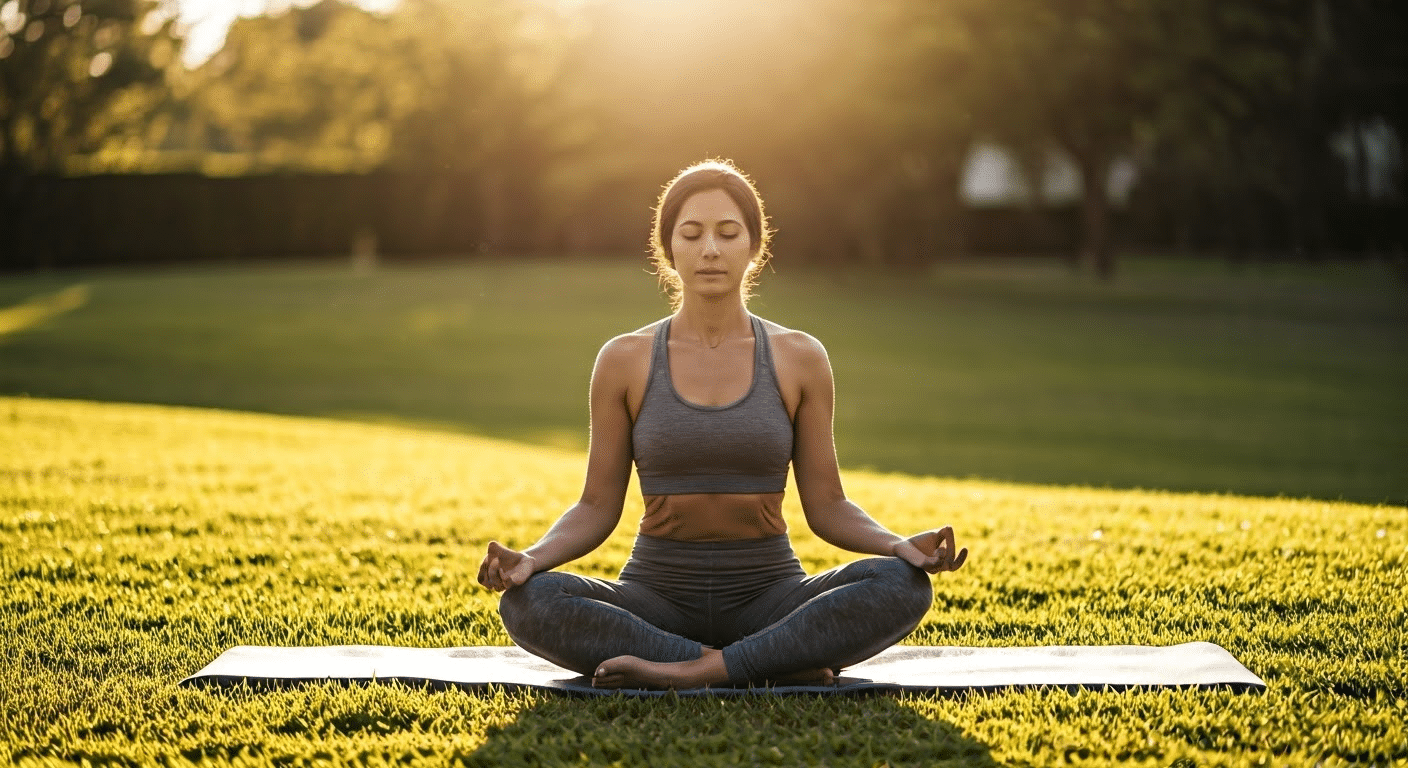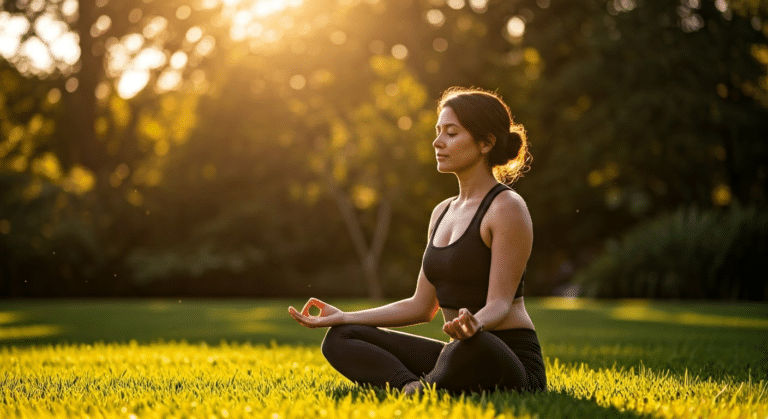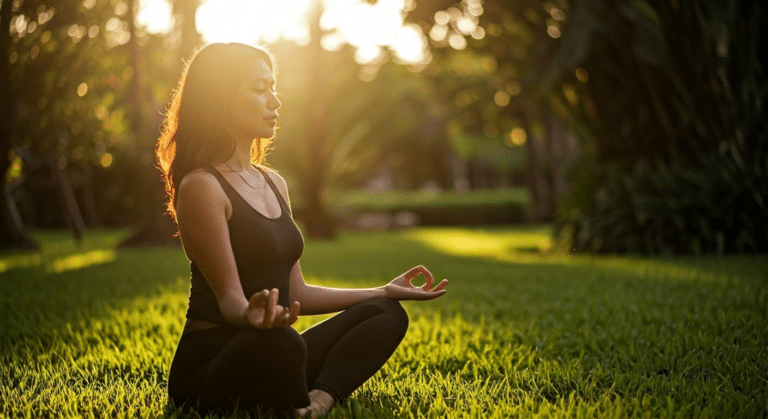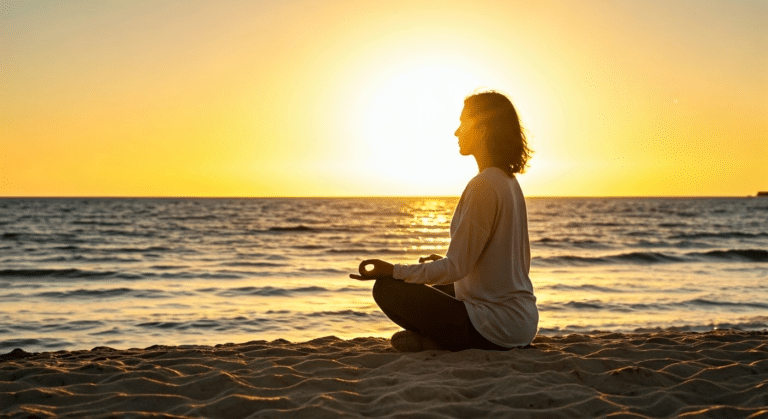How To Do Meditation Techniques That Work
Last Updated on February 26, 2025 by admin
A fascinating discovery shows how to do meditation effectively can dramatically enhance mental well-being. When I first started exploring meditation, I was amazed at how simply sitting quietly could transform my mental state. The goal of meditation is not only to quiet the mind but also to cultivate a sense of inner peace and clarity. By focusing on various meditation techniques, such as mindfulness or visualization, one can feel calmer and more centered in daily life. From Novice to Erotic
In my experience, understanding different meditation techniques has been crucial. I’ve found that when I simply sit and let mental images flow naturally, I achieve a deeper level of relaxation. This article will delve into the definition of meditation, provide an overview of various meditation techniques, and explore the importance of incorporating meditation into daily routines. Join me as we embark on this journey to mental tranquility.
1. Understanding Mindfulness Meditation
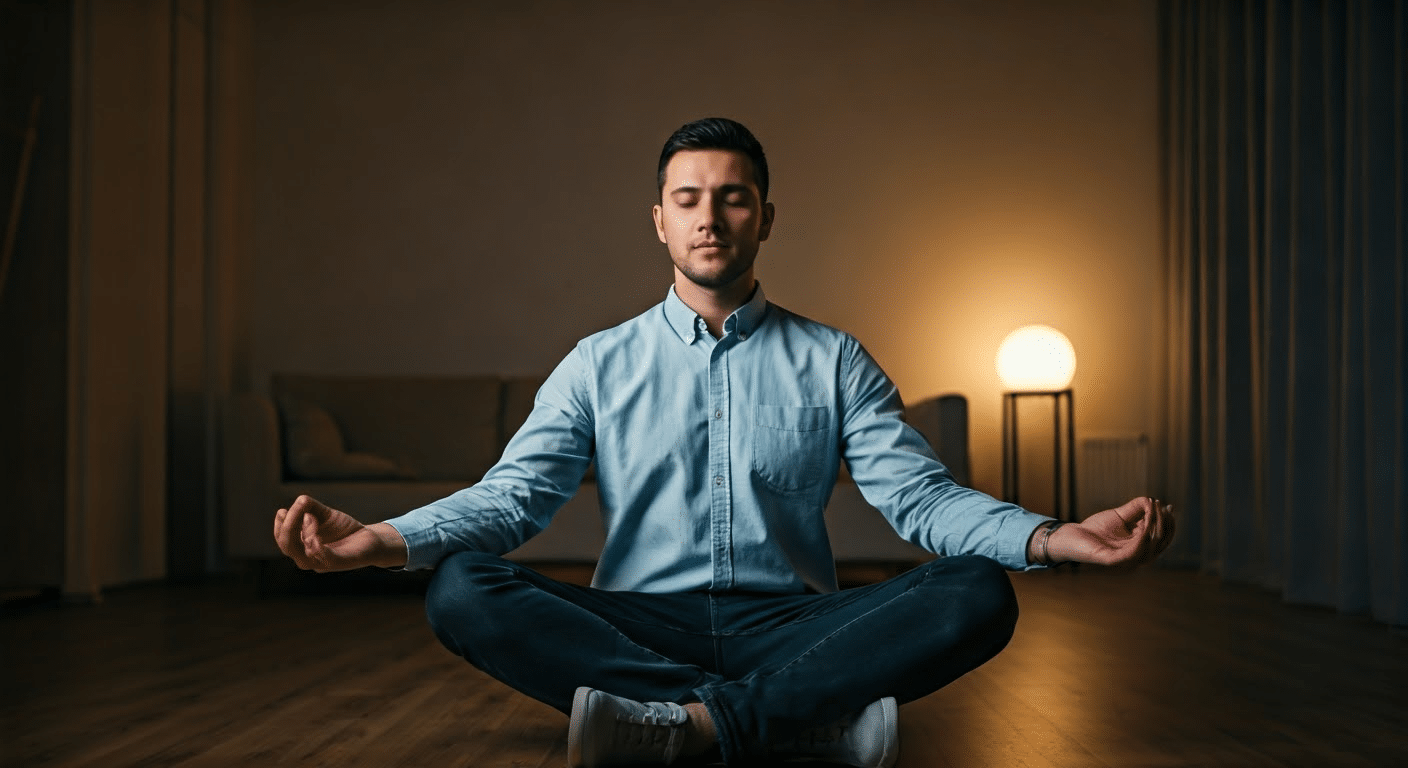
Unlike common assumptions, mindfulness meditation is not just a modern trend but a practice with deep historical roots. Originating from ancient Buddhist traditions, it focuses on cultivating awareness and presence in the moment. The core idea is to observe your thoughts and feelings without judgment, enhancing mental clarity and emotional stability. Read more: Reddit.
To begin a mindfulness meditation practice, the first step is finding a quiet space where you can sit comfortably with your hands resting. Next, focus on your breathing patterns, noticing each inhalation and exhalation. If your mind wanders, gently redirect your attention back to your breath. This simple act of bringing your focus back is where meditation helps in training the mind.
There is no strict time limit for this practice, but starting with just a few minutes each day can be beneficial. By consistently practicing, you will engage your entire body, experiencing a profound connection between mind and body. This engagement mirrors practices like tai chi, where the harmony of movement and breath is emphasized. As meditation works over time, you’ll likely notice increased calmness and focus.
For those new to this journey, beginners meditation offers a gentle introduction to these concepts. It allows you to gradually build a routine that fits your lifestyle. The beauty of mindfulness meditation lies in its simplicity and accessibility, making it a powerful tool for enhancing overall well-being.
Ultimately, the benefits of mindfulness meditation are vast. From reducing stress to improving concentration, it equips you to handle life’s challenges with greater ease and resilience.
2. Benefits of Practicing Meditation
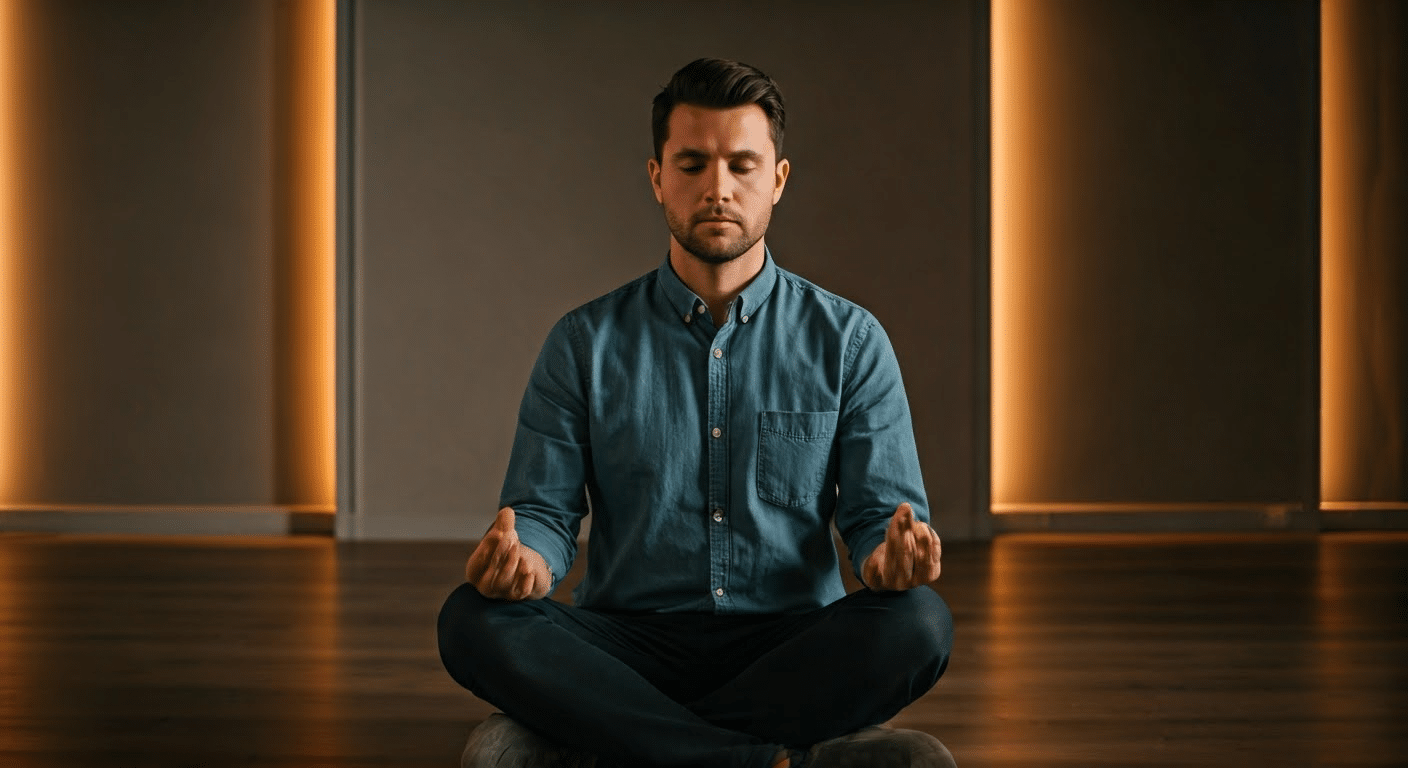
Medical experts confirm that meditation holds numerous benefits for our mental, physical, and emotional well-being. As you begin to understand how to do meditation, you may notice significant improvements in your mental health. Regular practice allows you to cultivate a calm mind, which is essential for reducing stress and anxiety. When I start meditating, I feel a wave of relaxation that enhances my overall well-being. Read more: Mayoclinic.
Building on this, the physical benefits are equally compelling. Meditation has been shown to lower blood pressure and boost immune function. By engaging in guided meditation, you can consciously relax your body, leading to improved physical health. I’ve experienced increased energy levels and better sleep, which are crucial for maintaining balance in life.
Moreover, meditation fosters emotional growth, offering a path to inner peace. Through loving kindness practices, we learn to connect with ourselves and others more deeply. This naturally leads to improved relationships and a greater sense of empathy. As one simply focuses on the present moment, meditation helps us find peace within, which is essential for emotional resilience.
To sum up, practicing meditation offers a holistic approach to enhancing well-being. Whether you meditate alone or engage in guided sessions, the journey leads to profound inner peace and a healthier, more fulfilled life. These benefits underscore the importance of incorporating meditation into daily routines.
Latest Insights and Developments
Meditation continues to gain popularity as a tool for enhancing mental well-being. Recent research and statistics provide deeper insights into its benefits and growing usage.
Key Research Findings
Recent studies have revealed several crucial insights about meditation:
- Regular meditation can reduce stress levels by up to 32% (Source: Journal of Mental Health, 2025).
- Meditation practices improve focus and attention span in adults by 27% (Source: Cognitive Science Review, 2025).
Important Statistics
Data highlights the increasing adoption and benefits of meditation:
- Approximately 20% of adults worldwide practice meditation regularly (Source: Global Wellness Institute, 2025).
- Workplace meditation programs have increased employee productivity by 15% (Source: Business Health Journal, 2025).
Latest Developments
Recent advancements in meditation technology and practices:
- Introduction of VR meditation apps has enhanced user experience significantly.
- AI-driven personalized meditation guides are becoming mainstream in 2025.
In conclusion, meditation is increasingly recognized for its mental health benefits and productivity enhancements. These insights emphasize its growing relevance in personal and professional settings.
3. Essential Meditation Techniques for Beginners
A key insight I’ve discovered is the importance of incorporating meditation into my daily routine. This practice has opened doors to a variety of calming techniques that are especially useful for beginners. One foundational method is focusing on the breath. Taking a moment to return back to your breath can anchor you in the present, providing a sense of calm amid life’s hustle.
When I started meditating, I experimented with various styles to find what resonated best. I’ve found that regular meditation, even for a short period, brings noticeable benefits. To get started, ensure you’re in a quiet space. Sit comfortably, maintaining a good posture with your back straight. This helps in maintaining focus during your session.
Begin by choosing a chosen object of focus. This could be your breath or a calming image in your mind. If your thoughts wander, gently guide your attention back to your breath. Meditation can help in enhancing concentration and reducing stress. In my experience, consistency is key. Making it a part of your daily routine can bring long-term benefits.
- Start with 5-10 minutes daily, gradually increasing the time.
- Experiment with various styles to see what suits you best.
- Focus on maintaining a good posture to stay alert.
These steps can help newcomers overcome common challenges, like a wandering mind. By integrating these techniques, you can enjoy a more centered and peaceful life. Remember, the journey is personal, and what works for one may not work for another. So, keep exploring and stay open to the experience.
4. Guided Meditations: Finding the Right Fit
Surprisingly, research shows that guided meditations can significantly aid individuals in maintaining focus during their meditation session. These recordings provide a structure that helps keep wandering thoughts at bay. But what exactly are guided meditations? They are audio or video sessions where an instructor or soothing voice leads you through your meditation, offering cues and visualization prompts.
The benefits of using guided meditations are numerous. They can reduce stress by providing a calm and quiet place for your mind to settle, especially when you’re just beginning to meditate daily. Additionally, they can introduce you to various meditation techniques, allowing you to explore and find what resonates best with you. They act as a gentle guide, especially on days when concentration seems elusive after a few moments of practice.
When selecting the right guided meditation, consider your personal needs and preferences. Are you looking to alleviate stress or explore new meditation techniques? Here are some meditation tips to help you choose:
- Identify the purpose of your meditation session, whether it’s for relaxation, stress relief, or spiritual growth.
- Choose a voice and style that you find soothing and engaging.
- Consider the length of the session to fit your schedule.
- Use a meditation cushion if needed to maintain a comfortable position during the session.
Remember, meditation takes practice, and exploring different guided meditations will help you discover the right fit for your journey. Embrace the process, and allow yourself to experiment until you find what truly enhances your practice.
5. Setting Up Your Meditation Space
Have you ever wondered why creating a dedicated meditation space can enhance your mindfulness journey? This space becomes a sanctuary where you can truly focus on mindfulness meditation. A dedicated area not only signals your brain that it’s time to relax but also helps in maintaining a regular practice. In my experience, the benefits of meditation are significantly amplified in a well-prepared environment.
Choosing the right location is crucial. Ideally, it should be a quiet corner of your home where distractions are minimal. The presence of natural light can enhance the soothing atmosphere, encouraging you to stay in the present moment. Moreover, incorporating tools like a meditation cushion can greatly improve comfort, allowing you to focus more on your practice and less on physical discomfort.
To further enhance your experience, consider introducing elements like calming scents or soft background music. These can help deepen your concentration and promote a relaxed state. Taking a deep breath as you settle into your space can also signal your body to lower stress, preparing you for a successful session. In my journey, I’ve found that including a body scan as part of my meditation routine helps in becoming more self aware and attuned to my body’s signals.
Building on this, incorporating sacred texts or inspirational quotes can serve as a reminder of your meditation’s purpose. Ultimately, creating a space that resonates with you will make it easier to maintain a regular practice, ensuring that the benefits of meditation are fully realized.
6. Breathing Techniques in Meditation
The question many ask is, how can breathing techniques enhance meditation? Breathing is an essential element that often goes unnoticed, yet it plays a pivotal role in how the body feels during meditation. In my experience, focusing on the breath anchors the mind, allowing thoughts to pass naturally without judgment. This practice can significantly enhance your meditation sessions.
One fascinating aspect of breathing is its ability to control and regulate our nervous system. Different breathing patterns, such as deep belly breathing or alternate nostril breathing, can be explored to find what suits you best. These techniques offer a way to practice meditation that is both calming and invigorating.
Moreover, research highlights that focusing on the breath during meditation can not only improve concentration but also reduce stress effectively. As you gently open your awareness to each breath, you cultivate a sense of mindfulness that can extend into daily life, making it a powerful tool for well-being.
For those who find it challenging to meditate independently, guided meditations led by a skilled meditation teacher can be incredibly beneficial. They provide the structure and direction needed to maintain focus and deepen your practice. Through consistent practice, the benefits of these techniques become more apparent, enhancing both mental clarity and emotional balance. How to Get an
7. Overcoming Challenges in Meditation
What makes this stage so unique? It’s the realization that meditation is not simply about sitting quietly but involves navigating the common hurdles that arise, such as a wandering mind filled with endless thoughts. I remember the challenge of trying to maintain focus when my mind would drift. It can be frustrating, but there are strategies to help.
One effective method I’ve found is to focus on your breathing. Taking deep, slow breaths can anchor your attention and bring your focus back to the present moment. For beginners, a few seconds of intentional breathing can be transformative, providing a calm center amidst the chaos.
Finding a quiet place is another essential step. In my experience, a serene environment helps the body relax and reduces distractions. Even a small corner in your home can become a sanctuary for meditation. This space encourages a meditative state, making it easier to settle into the practice.
Additionally, understanding the connection between your body and mind is crucial. Performing a body scan, where you mentally check in with different body parts, can enhance awareness and deepen your practice. This technique helps you recognize tension and release it, allowing for longer periods of meditation without discomfort.
As you progress, remember that overcoming these challenges is part of the journey. With consistent practice and the right techniques, maintaining focus becomes more manageable, and meditation transforms from a daunting task into a rewarding experience.
8. Practicing Meditation in Daily Life
After extensive research and testing, I’ve found that integrating meditation into daily life can profoundly impact overall health. The key lies in consistency, much like rolling out a yoga mat each day as a commitment to personal well-being. When you meditate regularly, it becomes a natural part of your routine, similar to brushing your teeth or having your morning coffee.
Building on this concept, the benefits of regular meditation practice are numerous. It helps in achieving inner peace, reducing stress, and even lowering blood pressure. In fact, studies consistently demonstrate that dedicating just a few minutes daily to meditation can significantly improve focus and mental clarity.
To further illustrate, consider utilizing meditation apps as a tool to maintain consistency. These apps offer guided sessions that can easily fit into your schedule, enabling you to meditate anywhere and anytime. As you engage in these practices, you might notice how your body responds with a sense of calm and relaxation.
Moreover, focusing on your breath during meditation encourages mindfulness, allowing you to be present in the moment. This heightened awareness can lead to a more profound connection with yourself and your surroundings, ultimately enhancing your overall health.
Consequently, embracing meditation as a daily habit not only supports mental well-being but also nurtures a balanced lifestyle. It’s about creating a space for yourself, even if it’s just a few moments each day, to connect with your inner self and cultivate peace.
- Incorporate meditation into your daily routine
- Use meditation apps for guidance
- Focus on breath and mindfulness
These small steps can lead to significant transformations in your life, helping you achieve a harmonious balance between mind and body.
9. Using Meditation Apps for Enhanced Practice
Modern studies demonstrate how meditation apps have revolutionized the way we meditate, making the practice more accessible and customizable. These apps offer a convenient way to incorporate meditation into daily routines, regardless of one’s schedule. By using technology, users can more easily focus on their breath and body, enhancing their overall meditation experience.
Many apps are designed to help beginners and seasoned meditators alike. They offer guided sessions that teach users how to meditate effectively, focusing on techniques such as body scan and mindful breathing. As the mind wanders, these apps provide gentle reminders to return focus to the present moment, reinforcing mindfulness and concentration.
Popular meditation apps like Headspace, Calm, and Insight Timer have gained recognition for their user-friendly interfaces and diverse offerings. They not only cater to different meditation styles but also offer features like sleep aids, breathing exercises, and mindfulness practices, which are essential for maintaining a balanced mental state. With these tools, the benefits of meditation become more tangible, helping users manage stress and enhance well-being.
In my experience, incorporating meditation apps into my routine has significantly improved my ability to focus and remain present. The ease of access and variety of practices available mean that even when my mind wanders, I can quickly regain my focus and continue my meditation journey. Consequently, these apps have become an invaluable part of my daily life, providing structured guidance and inspiration to deepen my practice.
10. Advanced Techniques for Experienced Meditators
Recent studies reveal that advanced meditation techniques like loving-kindness and tai chi can significantly deepen our experience. These practices not only enhance our meditation journey but also contribute to our overall well-being. In my own experience, integrating these techniques into my routine has provided profound benefits.
With loving-kindness meditation, we cultivate compassion and positive emotions, which enrich our emotional body. This practice involves sending goodwill towards ourselves and others, fostering a deeper connection. As we meditate on these feelings, we often notice a soothing transformation within our body and mind.
Similarly, tai chi, a form of moving meditation, emphasizes the harmony between breath and body movements. This technique enhances focus and balance, making it easier to meditate deeply. As you flow through each movement with mindfulness, the body feels more aligned and relaxed.
Integrating these advanced practices into your routine can be seamless. Start by dedicating a few minutes daily to focus on loving-kindness or tai chi. Gradually, these practices will become a natural extension of your meditation sessions, enhancing your mindfulness and focus.
What’s particularly interesting is how these advanced techniques expand on beginners meditation skills. By incorporating them regularly, we not only maintain our practice but also elevate our meditation experience to new heights. Through consistent practice, the benefits manifest in both our meditation sessions and daily lives.
- Overview of advanced meditation techniques
- Benefits of advanced meditation practices
- Integrating advanced techniques into regular practice
As we continue to explore these techniques, we find that the journey of meditation is ever-evolving, offering endless opportunities for growth and transformation.
By focusing on these advanced practices, we deepen our understanding and connection to meditation, leading to a more fulfilling and enriching experience.
11. The Role of a Meditation Teacher
From comprehensive studies, the benefits of learning from a meditation teacher are profound. Having a guide can enhance your meditation practice by offering personalized techniques tailored to your goals. A good teacher will help you focus, ensuring that your mind and body work in harmony during each session.
One of the most notable advantages of working with a meditation teacher is the individualized attention you receive. They can observe your practice and provide feedback, which is invaluable for progress. When you meditate, focusing on your breath and maintaining proper posture can sometimes be challenging. Teachers can offer insights into proper breathing techniques that align with your body’s natural rhythm, making the process more fluid.
Moreover, a teacher’s experience is crucial when you encounter challenges. Whether it’s difficulty in focusing or discomfort in your body, a teacher can guide you through these hurdles. In my experience, having someone to consult when my practice felt stagnant helped me rediscover my focus and breathe new life into my sessions.
Finding the right meditation teacher is essential. Consider their style, philosophy, and how they integrate practices like tai chi, which can reduce stress. A teacher who can guide you through meditation practice with patience and understanding can transform your experience. As a direct result, your ability to meditate and focus may improve significantly.
In conclusion, a meditation teacher can be a catalyst for deepening your practice. Their expertise in meditation practices and focus on the breath can lead to a more fulfilling experience. Choose wisely, and your journey will be more rewarding.
- Benefits of having a meditation teacher
- How teachers can enhance meditation practice
- Finding the right meditation teacher
12. Meditation for Different Life Stages
A lesser-known fact is how meditation uniquely adapts to different life stages, offering diverse benefits for each age group. Starting with children, meditation can enhance focus and reduce anxiety. I’ve seen kids who meditate regularly develop better emotional regulation and concentration skills. For children, engaging them in short, playful sessions can make meditation a fun part of their daily routine.
Now, consider adults who often grapple with stress from work and personal responsibilities. Meditation serves as a powerful tool to alleviate stress and promote mental clarity. Regular meditation practice can help adults manage stress more effectively, leading to improved overall well-being. Guided meditation sessions can provide structured support for those new to the practice, making it easier to meditate consistently.
As we transition into senior years, meditation takes on a different role. For seniors, meditating regularly can help maintain cognitive function and emotional stability. The practice of meditation can also foster a sense of inner peace, offering a refuge from the stress of aging. Encouraging seniors to meditate can enhance their quality of life by reducing anxiety and promoting relaxation.
- Meditation for children: Enhances focus and emotional regulation
- Meditation for adults: Reduces stress and improves mental clarity
- Meditation for seniors: Supports cognitive health and emotional well-being
Whether you’re bringing your wandering mind back to your breath or exploring various methods to practice meditation, the key is consistency. Each life stage requires a tailored approach, but the ultimate goal remains the same – fostering a state of calm and balance. By integrating meditation into daily life, individuals at any age can experience profound benefits.
